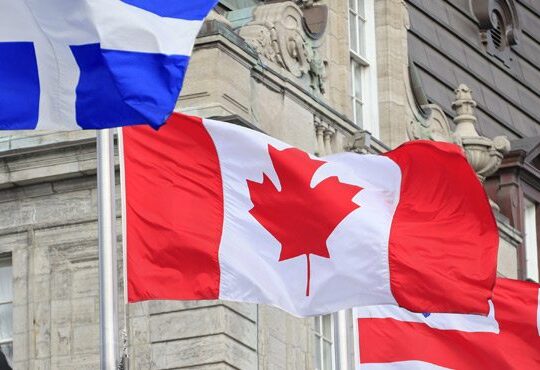Do I Have To Pay Tax By Instalments?
TurboTax Canada
January 23, 2025 | 4 Min Read
Updated for tax year 2024

If you earn income that has no tax withheld or does not have “enough tax withheld” for more than one year, you may have to make instalment tax payments.
This can happen when you earn income from rental properties, investments, self-employment, certain pension payments, or your employer/employers are not withholding enough income tax from your paycheques. Greg Kauffeldt, a senior tax manager at an Ottawa based accounting firm, describes making instalment payments as “pre-paying a tax liability.”
Paying Instalments — Required
According to Kauffeldt, “you have to make instalment payments if you have a tax bill of over $3,000.” This means that the amount of net tax you owe or would end up owing at the end of the tax year exceeds $3000; $1,800 for residents of Quebec*. This can occur if no taxes — or not enough taxes — are deducted from your income during the year. In addition to self-employment and rental income, income from some pension plans, some investment income and income from more than one job also may be subject to instalment tax payments.
Instalment Due Dates
“Due dates are the same for everyone and set to the 15th of each quarter,” says Kauffeldt. The Canada Revenue Agency lists the due dates as:
- March 15th
- June 15th
- September 15th
- December 15th
If an instalment payment due date happens to fall on a weekend or on a major holiday, the CRA considers the payment made on time if it is received, or it is postmarked, on or before the following business day.
Payment Options
The CRA sends out instalment payment reminders twice a year to anyone who may have to pay such taxes. Your receipt of a reminder does not necessarily mean that you have to make instalment tax payments. Remember, you do not have to make them unless your net tax exceeds $3,000.
You can make instalment payments through direct debit from your bank account. To do so, you need to set up a pre-authorized debit through the CRA’s My Account service.
You also may make payments using the CRA’s My Payment service. Or, you have the option to pay electronically using your financial institution’s online or phone banking services.
If you have the Form INNS3, Instalment Remittance Voucher, you can pay instalments at your bank, a Canadian Chartered Bank, a credit union or caisse populaire. A teller can provide you with proof of payment.
COVID related repayments information below:
How Much to Pay
You may use three different methods to calculate your instalment tax payments.
- You can pay the amount indicated on your instalment reminder form — this is called the no-calculation option. The CRA calculates your net tax owed on the reminder form by using past years’ information. In 2025, for instance, March and June payments would be based on 2023 net tax owed. For September and December, your payments would be the difference between your net tax owed in 2024 minus what you paid in March and June. This option is best for those whose financial and employment situations are relatively static over long periods of time.
- The second option is the prior-year option, which uses your net tax owed from the last tax year to determine what you owe this year. The prior-year option may apply to you if you have maintained a similar financial situation for the past year, but two years ago, you had a different financial or employment situation.
- The last option is the current-year option, which is solely based on this year’s tax information. This option may apply to you if your employment or financial situation has recently changed.
Impact on Your Return
Kauffeldt explains that instalment payments act as “a credit on the return, they give credit (for the tax you paid, but) do not change your tax liability.” By paying the tax you owe throughout the year, you have paid your taxes just like a person that has taxes are withheld from their paycheque. You are still entitled to credits, deductions and other tax benefits just as any other taxpayer.
Any instalment payments you have made throughout the year are claimed on your tax return on Line 47600 – Tax Paid by Instalments. The amount you have paid and are able to claim can be found on the back of Form INNS1, Instalment Reminder, or on Form INNS2, Instalment Payment Summary.
These forms are records of your instalment payments that you have made to date. You will receive:
- Form INNS1 in February and in August
- Form INNS2 in February
If you made an instalment payment for that is not shown on your reminder or summary, include that amount on line 47600 as well. You can also see your instalment reminders and the instalment payments you have made by using My Account.
If your summary shows payments that you did not make or that were not intended as an instalment payment, call 1-800-959-8281.
If you do not make your instalment payments, make late payments or you do not make enough instalment payments, you may have to pay interest and a penalty. Also, you can reduce, or even eliminate, instalment payments by reducing the amount of net tax you owe. To reduce the amount of net tax you owe, if you earn a regular salary from an employer, you simply opt to increase the amount of tax withheld from your pay.
*Quebec Residents
If you live in Quebec on December 31 of a year, the threshold is $1,800 of net tax owing before you must make instalment payments. Instalment payments (also called quarterly payments) are partial payments you make periodically to cover your income tax for the year and, where applicable:
- your Québec Pension Plan (QPP) contribution
- your contribution to the Health Services Fund
- your premium under the Québec Prescription Drug Insurance Plan
- your Québec Parental Insurance Plan premium
More information for Quebec residents can be found in the following links;
- Revenu Quebec: Instalment Payments of Income Tax brochure IN-105-V
- Revenu Quebec: Instalment Payments (and how to calculate and make them)
References & Resources
Related articles

© 1997-2024 Intuit, Inc. All rights reserved. Intuit, QuickBooks, QB, TurboTax, Profile, and Mint are registered trademarks of Intuit Inc. Terms and conditions, features, support, pricing, and service options subject to change without notice.
Copyright © Intuit Canada ULC, 2024. All rights reserved.
The views expressed on this site are intended to provide generalized financial information designed to educate a broad segment of the public; it does not give personalized tax, investment, legal, or other business and professional advice. Before taking any action, you should always seek the assistance of a professional who knows your particular situation for advice on taxes, your investments, the law, or any other business and professional matters that affect you and/or your business.









